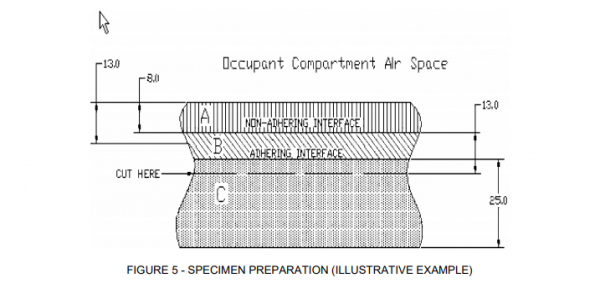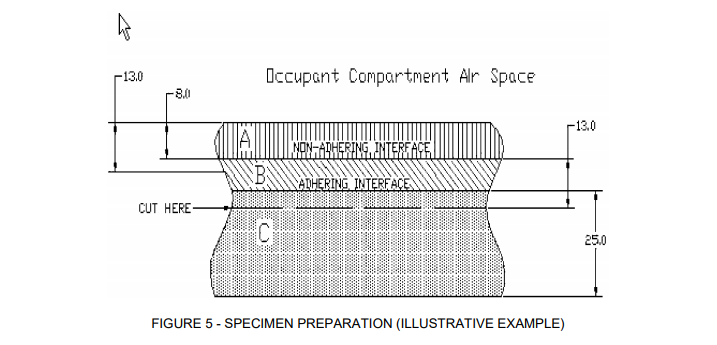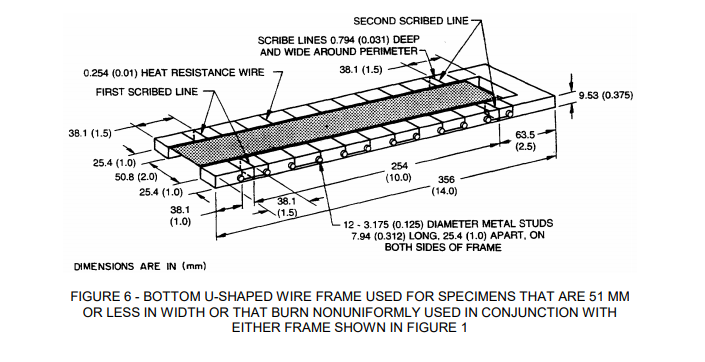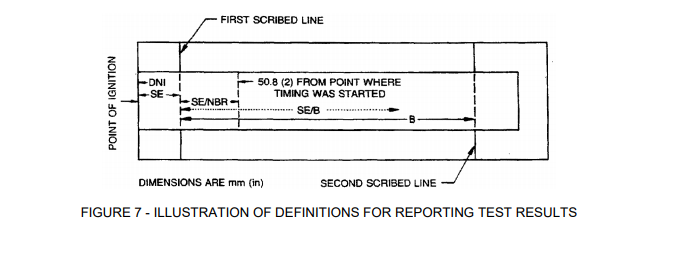Products
News
Contact
- Qinsun Instruments Co., Ltd.
- Tell:+86-21-6780 0179
- Phone:+86-17740808215
- Address:No. 2578 Minhang District Gu Dai Road, Shanghai
- Contact:Mr. Li
- QQ:846490659
Flammability test procedure of Polymeric Interior Materials

This SAE Standard pertains to automotive vehicles and off-road, self-propelled work machines used in construction, general purpose industrial, agriculture, forestry, and specialized mining machinery. This standard does not address all of the safety concerns, if any, associated with its use. It is the responsibility of the user of this document to establish safety and health practices and determine the applicability of regulatory limitations prior to use. Fire testing is inherently hazardous. Adequate safeguards for personnel and property shall be employed when conducting this test.
TEST SPECIMENS:
Test a minimum of 5 specimens, unless otherwise agreed upon by both parties. In all instances, the largest possible specimen size is to be cut from the material up to the standard specimen size of 102 mm x 356 mm x thickness. The minimum width and length shall be 95 mm x 300 mm. Cut specimens from uniform density samples. The maximum thickness of any specimen shall be 13 mm. If any material to be tested exceeds this, it shall be cut to the previous thickness by a mechanical process applied to the side, which does not face the occupant compartment, so that specimen shall include the primary surface of the part. In case of materials made of different composition, which are not composite materials, all the layers within a depth of 13 mm from the surface facing towards the occupant compartment shall be tested individually, as shown in Figure 5. Any material that does not adhere to other material at every point of contact shall be tested separately. Any material that adheres to other material(s) at every point of contact shall be tested as a composite with other material(s). Record the information on specimen preparation in the test report. For composites, laminates, or surface-treated samples, the side nearest to the compartment occupant should be placed facing down during testing. If the material's grain pattern or construction is such that it has a directional effect on the burning rate, testing should be conducted in both the transverse and longitudinal directions. Where the maximum available width of the specimen is 51 mm or less so that the sides of the specimen cannot be held in the two matching U-shaped frames, it is to be supported by the use of.25 mm wires of heat-resistant composition spanning the top surface of the bottom U-shaped frame at 25 mm intervals, as shown in Figure 6. The U-shaped wire frame shall also be used for a specimen that softens and bends at the flaming end.

Material A has a non-adhering interface with material B and is tested separately. Part of material B is within 13 mm of the occupant compartment air space, and materials B and C adhere at every point of contact; therefore B and C are tested as a composite. The cut is in material C as shown, to make a specimen 13 mm thick.
1、Selection and Direction Shall be as specified in the applicable standard.
2、Surface Preparation When materials to be tested contain either a napped or a tufted-type surface, this test specimen shall be placed on a hard, flat surface and combed twice against the nap prior to testing.

TEST PROCEDURE:
1、Prior to testing, each specimen is conditioned for 24 h at a temperature of 23 °C ± 2 °C and 50% ± 10% relative humidity or as otherwise specified.
2、For convenience, the samples may be stored up to 1 h in closed polyethylene bags after conditioning and prior to testing.
3、The tests should be conducted with the metal cabinet in a draft-free fume hood to prevent fumes from spreading throughout the room. The face velocity of the fume hood shall not exceed 0.4 m/s. The burn room shall have a temperature between 15 °C and 35 °C and a relative humidity between 45% and 75%.
4、Close the air intake ports on the burner and adjust the gas flow to produce a flame 38 mm ± 1 mm in height.
5、Place the mounted specimen in a horizontal position in the center of the cabinet.
6、Position the burner so that the center of the barrel is directly below the center of the open end of the mounted test specimen.
7、Expose the specimen to the flame for 15 s, then extinguish the burner flame or remove the burner from the specimen.
8、From the time of the initial burner flame contact with the specimen, observe for any rapid burning or flame front progression across the top or bottom surface of the material. Begin timing (without reference to the 15 s burner flame application), when the leading flame front reaches the first scribed line 38 mm from the open end of the U-shaped frame. If the leading flame front progresses more than 51 mm beyond the first scribed line at such a rapid rate that it cannot be measured with any degree of accuracy, the material shall be classified as RB.
9、Stop the timing when the flame is either extinguished or has burned the additional 254 mm to the second engraved line on the specimen holder.
10、Record, in seconds, the time required for the flame to travel the 254 mm between the scribed lines on the specimen holder. Or, record the time in seconds and the burned length beyond the 38 mm scribed line if the flame is extinguished before traveling the full 254 mm.
11、Use the following classifications to report the complete flammability results as illustrated in Figure 7 and described in Sec. 3.

REPORT:
The following information shall be on the report.
1、Complete identification of the material tested, including generic description, manufacturer, commercial designation, and lot number, color and other information as requested.
2、Directionality of the specimens, if pertinent.
3、The thickness and type of specimens tested, that is, composite, laminate, finished section, cellular foam, etc.
4、Conditioning treatment.
5、Any prior treatment before testing, other than cutting, trimming and conditioning.
6、Number of specimens tested.
7、Burnt distance in mm, and burning time, in seconds.
8、All calculated single values of burning rate, in mm/min.
9、Average burning rate in millimeters per minute when the flame reaches the specific end point. Report D and T separately for each specimen when the flame propagation stops before reaching the end point.
10、The report shall contain the following statement: “This report is not intended to reflect hazards presented by this or any other material under actual fire conditions and shall not be used for fire risk assessment under actual fire conditions.”
NOTES:
A change bar (l) located in the left margin is for the convenience of the user in locating areas where technical revisions, not editorial changes, have been made to the previous issue of this document. An (R) symbol to the left of the document title indicates a complete revision of the document, including technical revisions. Change bars and (R) are not used in original publications, nor in documents that contain editorial changes only.





